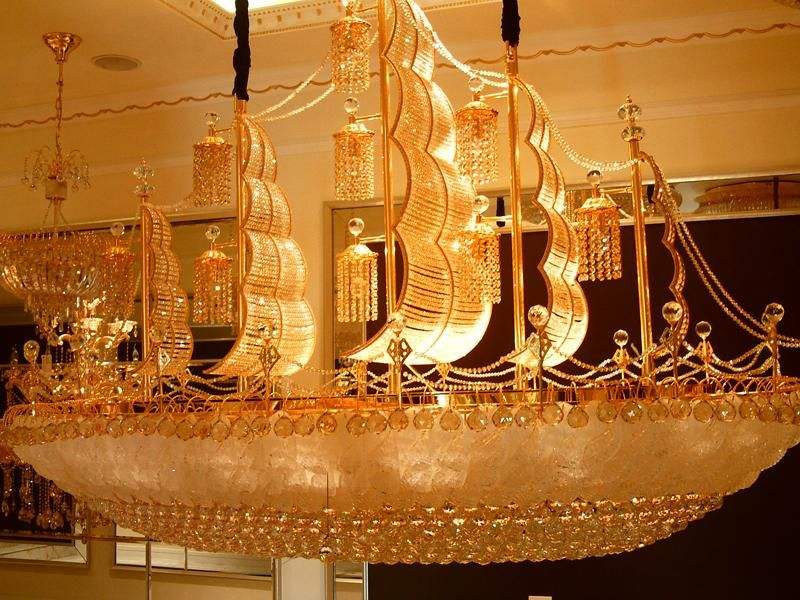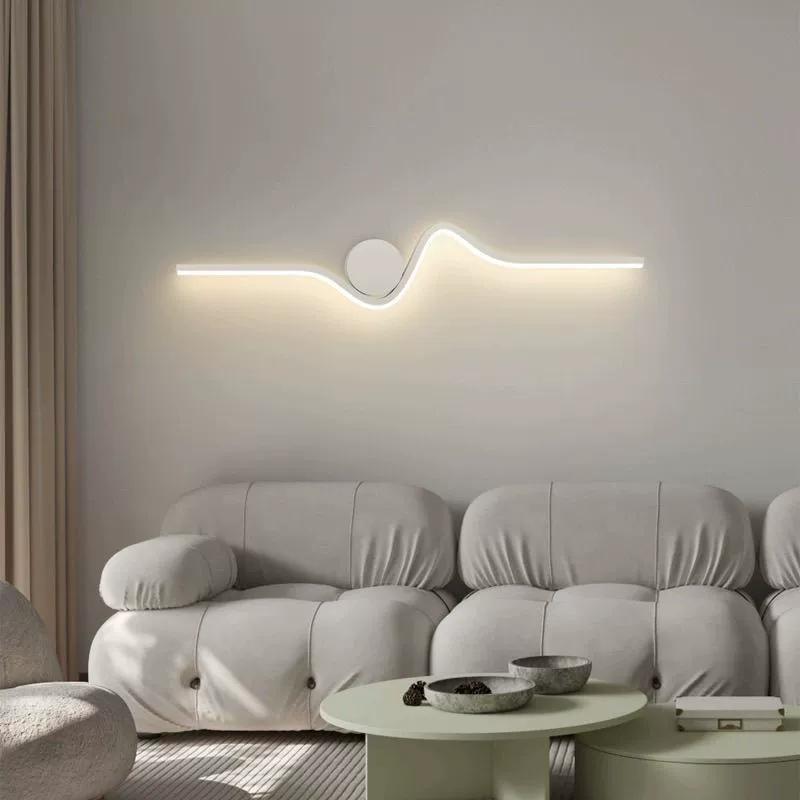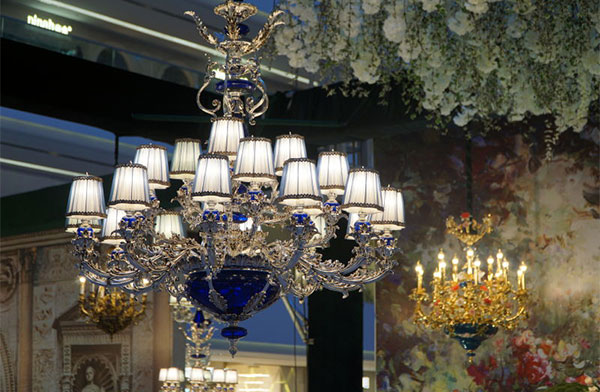Principles and presentation methods of lighting design
2024-10-161Ð Principles of Design
1. Functional principle: Lighting design must meet functional requirements, select different lighting methods and fixtures according to different spaces, occasions, and objects, and ensure appropriate illumination and brightness. For example, the lighting design of the conference hall should adopt vertical lighting, requiring uniform brightness distribution and avoiding glare. Generally, comprehensive lighting fixtures should be selected.
2. Aesthetic principle: Lighting is an important means of decorating and beautifying the environment, as well as creating an artistic atmosphere. In order to decorate indoor spaces, increase spatial hierarchy, and render environmental atmosphere, it is important to use decorative lighting and decorative lighting fixtures. In the environmental design of film and television buildings, commercial buildings, and entertainment buildings, lighting has become an integral part of the overall design. Lighting fixtures not only ensure illumination, but also pay great attention to their shape, material, color, proportion, and scale. Lighting fixtures have become indispensable decorations in spaces. Lighting designers use rhythmic control of the brightness, concealment, modulation, and intensity of lighting to fully utilize the brilliance and color of light. They use various means such as transmission, reflection, and refraction to create a warm, soft, peaceful, elegant, romantic, radiant, magnificent, joyful, lively, mysterious, and mysterious artistic atmosphere, adding rich and colorful fun to people's living environment.
3. The principle of economy: Lighting is not necessarily better with more, but with strength. The key is scientific and reasonable. Lighting design is aimed at meeting people's visual physiological and aesthetic psychological needs, maximizing the practical and aesthetic value of indoor spaces, and achieving the unity of functional and aesthetic use. Dazzling but impractical lighting not only fails to add icing on the cake, but also adds unnecessary details, causing electricity consumption, energy waste, and economic losses. It can even cause light pollution and harm one's health.
The standard for brightness of lighting varies depending on the purpose and clarity requirements for resolution.
4. Safety principle: Lighting design requires absolute safety and reliability. Due to the fact that the lighting comes from a power source, strict safety measures such as electric shock prevention and circuit breaker prevention must be taken to avoid the occurrence of accidents.
Hotel lighting fixtures
2Ð The expression of lighting
1. Surface lighting refers to the luminous surfaces made of indoor ceilings, walls, and floors. The characteristics of the ceiling in terms of light are uniform illumination, sufficient light, and various forms of expression. If a fluorescent ceiling is used, the light density must be consistent to ensure sufficient light in every space; For example, using a large area tube lamp ceiling with regular bull's-eye lamps on the ceiling, like a starry night sky; For example, combined with the structure of the ceiling beam, it is designed as a series of light wells, and light is emitted from the well grid, creating a unique spatial effect. Wall lighting is generally used for photo exhibitions. Make the wall into a hollow double-layer sandwich wall, and make the wall facing the exhibition into a luminous wall. There are several glass frames embedded in it, and a projection device is set behind the frames to form a luminous exhibition wall. Large lightbox advertisements also belong to this type of lighting. Ground lighting is the process of making the ground into a luminous floor, usually set up for dance floors. The colorful luminous floor, with its light, shadow, and color changing synchronously with the rhythm of electronic sound systems, greatly enhances the artistic atmosphere of stage performances. 2. The term 'strip of light' refers to the arrangement of light sources in a long strip of light. There are various forms of expression, including square, grid, bar, grid, ring (circular, elliptical), triangle, and other polygons. Such as peripheral flat light strip ceiling, peripheral concave light strip ceiling, inner frame concave light strip ceiling, inner frame concave light strip ceiling, peripheral light strip floor, inner frame light strip floor, circular light strip floor, upper projection light groove, ceiling concave light groove, foot concave light groove, etc. Long strip light strips have a certain degree of directionality and are often used as directional lighting in the design of crowded public places. Other geometric light strips are generally used for decoration.
3. Point light refers to a light source with a small and concentrated projection range. Due to its strong illumination, it is mostly used for direct or key lighting in restaurants, bedrooms, study rooms, as well as in shop windows, stages, and other places. There are various techniques for expressing point light, including top light, bottom light, forward light, backward light, side light, etc. Top light - top-down illumination, similar to direct sunlight at noon in summer. The projection of illuminated objects is small and the contrast between light and dark is strong, so it is not advisable to use decorative lighting. Bottom light - bottom-up illumination, suitable for auxiliary lighting.
Shunguang - illumination from the front, with a flat projection, fully displaying the color of the illuminated object, but with poor stereoscopic effect. Backlight - illumination from the rear, with a clear outline of the illuminated object and an artistic silhouette effect, is a commonly used lighting method in photography and stage canopies.
Side lighting - the illumination of light from left to right and top left, top right, bottom left, and bottom right directions, with clear projection of the illuminated object, strong sense of three dimensionality, and rich layers, is the most easily accepted lighting method by people.
Hotel lighting fixtures
4. Static lights and flowing lights - Static lights are lights that are fixed and do not flicker, with the lighting remaining static and unchanged. The vast majority of indoor lighting uses static lights, which can fully utilize light energy and create a stable, soft, and harmonious lighting environment atmosphere, suitable for places such as schools, factories, office buildings, shopping malls, exhibitions, etc.
Flowing lighting - is a flowing lighting method that has rich artistic expression and is commonly used in stage lighting and urban neon advertising design. Such as using "chasing lights" on stage to constantly chase moving actors, or neon lights used as advertising lighting that constantly flow and flicker, frequently changing colors, not only highlight artistic images, but also render environmental artistic atmosphere.
5. Laser is a beam of light emitted by a laser. The media that generate laser beams include crystals, glass, gases (such as argon, krypton, helium neon mixtures, etc.), and dye solutions. Some gas lasers have been used as light sources for light art, among which helium neon lasers are the most commonly used, producing red monochromatic light; The argon ion laser produces blue-green and green light, which can be separated by a diffraction grating to form two monochromatic beams of different colors.
Different dye lasers can generate any type of laser with a wavelength range of 400-750mm as needed. However, dye lasers are devices that operate in a pulsed manner and must rely on their laser or electronic flash as a driving source.
3Ð The types and artistic effects of lighting fixtures. With the rapid development of new technologies and materials, lighting fixtures come in a wide variety of colors and shapes, with endless variations in light, color, shape, and quality. Lighting fixtures not only provide lighting conditions for people's lives, but also serve as an important finishing touch in indoor environment design. Luminaires can be classified into the following types according to their installation methods. Suspended type - commonly known as pendant lights. There are general chandeliers used for general indoor spaces; Lantern, used for luxurious and tall lobby spaces; Palace lanterns are generally used in halls with traditional classical style; The telescopic pendant lamp uses a flexible snake skin tube or chain as a lifting device, which can adjust the height of the lamp as needed within a certain range. Ceiling mounted type - lighting fixtures that are tightly attached to the ceiling. There are protruding ceiling lights, which are suitable for a larger area and can be used individually or in combination. The former is suitable for smaller spaces, while the latter is suitable for larger spaces; Embedded ceiling light, with fixtures embedded in the ceiling, creates a feeling of starry sky when used in combination. Wall lamps - There are two types of wall lamps: attached and suspended, which are installed on walls and columns. The design of wall lamps should be decorative and suitable for various spaces. Floor lamps, also known as seat lamps, are local lighting fixtures used in hotel rooms, reception rooms, and other spaces. They are one of the indoor furnishings and have a decorative effect on the space. Desk lamp - a local lighting fixture located on tables, coffee tables, and low cabinets. In modern hotels, desk lamps have become a distinctive decorative lighting method. Special lighting fixtures - lighting fixtures specially manufactured for various purposes, such as chasing lights, returning lights, sky floodlights, rotating lights, beam lights, meteor lights, etc. used for stage performances.
Hotspot Recommendations
-
Hotel Lighting Customization Project
2025-03-20





